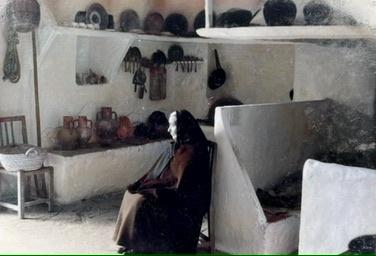What role do clay tile roofs play in protecting Mallorcan homes from the island's climate?
Similar Topics
clay tile roofs
mallorcan architecture
mediterranean climate protection
terracotta roofing
thermal regulation
rainwater drainage
salt corrosion resistance
traditional roofing
Clay tile roofs are a defining feature of traditional Mallorcan architecture, serving both practical and aesthetic purposes in protecting homes from the island’s Mediterranean climate. These roofs are crafted from terracotta, a natural material that is highly durable and well-suited for the environmental conditions found on Mallorca. The tiles' thermal properties help regulate indoor temperatures by reflecting intense summer heat while retaining warmth in cooler months, thereby making homes more comfortable year-round without excessive reliance on artificial heating or cooling.
The curved shape of the clay tiles is also integral to their protective function. This design efficiently channels rainwater down the roof, preventing water from seeping into the structure and causing damage. During the autumn and winter, Mallorca experiences occasional heavy rains and strong winds, and the weight and interlocking nature of the tiles provide stability and resistance against such weather. Moreover, clay tiles are resistant to salt corrosion, a crucial benefit given the island’s proximity to the sea and the presence of salty sea breezes.
Beyond their climatic advantages, clay tile roofs contribute to the visual harmony of Mallorcan villages and rural landscapes. Their earthy tones blend seamlessly with the island’s natural surroundings and historic buildings, maintaining a cohesive and authentic regional character. This traditional roofing method has persisted for centuries because it consistently meets the functional needs imposed by Mallorca’s sun-drenched, occasionally stormy environment, offering reliable protection that modern materials sometimes struggle to match in both durability and environmental compatibility.
The curved shape of the clay tiles is also integral to their protective function. This design efficiently channels rainwater down the roof, preventing water from seeping into the structure and causing damage. During the autumn and winter, Mallorca experiences occasional heavy rains and strong winds, and the weight and interlocking nature of the tiles provide stability and resistance against such weather. Moreover, clay tiles are resistant to salt corrosion, a crucial benefit given the island’s proximity to the sea and the presence of salty sea breezes.
Beyond their climatic advantages, clay tile roofs contribute to the visual harmony of Mallorcan villages and rural landscapes. Their earthy tones blend seamlessly with the island’s natural surroundings and historic buildings, maintaining a cohesive and authentic regional character. This traditional roofing method has persisted for centuries because it consistently meets the functional needs imposed by Mallorca’s sun-drenched, occasionally stormy environment, offering reliable protection that modern materials sometimes struggle to match in both durability and environmental compatibility.
🧩 Related Questions
Related Question
What resources or support does the Guardia Civil provide to tourists who become victims of crime on the island?
Related Question
What seasonal changes in vineyards can travelers expect to see when touring the Palma - Banyalbufar route?
Related Question
Are there any traditional Mallorcan expressions that visitors should know to better communicate with locals?
